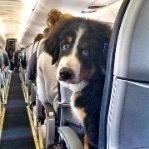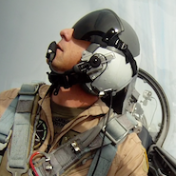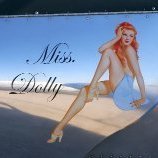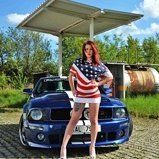Leaderboard
Popular Content
Showing content with the highest reputation on 10/29/2019 in Posts
-
Trumpeter's kit built as Colonel Harold Rau's P-38J "Gentle Annie"9 points
-
Here is an example of just how difficult it is to work out the colours in the engine bay from a black and white photograph (especially with a green/grey colour scheme). One really does need access to the real thing, and the knowledge of how to get to the original paint. Wiring up the engine is made a little easier with "spark plugs" to push the wire into, and the guide holes in the baffles on top of the cylinders. This makes it all a bit neater and more symmetrical. I initially left the front leads too long as you can see here. This had the effect of turning the engine into more of an ikebana arrangement than a radial engine, and I had to cut the leads back to size so they only have a little curve to them. The clamps holding each pair of leads together (or apart?) are the pieces of chopped up syringe that I flattened slightly. The cowling supports are now sporting their black coat, with some chipping as seen in the captured engine photo, as well as some pieces of fabric or leather that seem to be riveted onto the square tubing. I assume these are to stop metal on metal chafing? You may notice that I cut the kit's large round fittings (that join the support to the engine) in half and filed them square to look a little less toy-like. Since I was going to paint, I got the oil tank and firewall prepped. The oil tank is a little rudimentary, so it got some extra detail including what looks like a fluid level gauge on the top, as well as the exit pipe and a filler cap. I also added the fairly distinctive flange at the back of the tank. This was then sprayed with Alclad "White Aluminium" and once dry, given a coat of clear blue/green mixed to favour the green for the oil tank. On the rest of the fuselage it appears that the protective Aotake paint is more blue. Time to move into the cockpit...9 points
-

HH-60G Pavehawk Kitty Hawk 1/35 DONE!!
Landrotten Highlander and 8 others reacted to Pete Fleischmann for a topic
pressing on with the cabin ceiling- much more to do here..but getting there! cheers, Pete9 points -
MH 60 Academy SeaHawk. 1/35 scale.
Coneheadff and 5 others reacted to shark64 for a topic
Wash work in progress.6 points -
1/32 OV-10D Bronco by Kitty Hawk
jgrease and 4 others reacted to spyrosjzmichos for a topic
Hi all! We're on the final stretch now with all major assemblies complete and cleaned up. I made sure to install two plastic beams across the central fuselage to provide support for the outer wing sections and tail booms. A bit more clean up is required and then I should be able to start painting the Bronco!5 points -
Trumpeter 1/32 P-38
TimHepplestone and 3 others reacted to Grizly for a topic
For Bigg Tim, I did a little scratch building based on some research. See below. For Tim Hepplestone, It's a good kit but previous modellers have expressed frustration getting a good lower wing to nacelle joint and have invariably resorted to filling the joints with lots of putty. I found that key to completing the wing to nacelle/tail boom assembly was joining the lower wing half to the nacelles first rather than following the kit instructions. With this method you end up with a perfect seam/panel line joint that requires absolutely no filler. Its a but joint so I reinforced the inside with plastic strip. See below.4 points -
1/12 MFH Ferrari GTO 250 - Finished
Starfighter Jock and 3 others reacted to MikeA for a topic
Another few photos of the finished engine. I did try to find oil filter markings more suited to the 21st Century, but was not successful, so this miniature carries an old stock filter from 1962. The gearbox was soldered together to hide the seam between the halves. It waas my first time soldering white metal and made me wonder why I had put it off for so long.I struck it lucky and there was hardly any clean up required after joining the pieces. What was a beggar was aligning the gearbox with the engine, despite a brass rod running between the two. I used datum lines on a plate of glass to assist and it all worked out in the end. Thank you for looking in. any comments welcome. I did notice that the left hand distributor had broken loose after taking the last photo! Cheers, Mike4 points -

Sepecat Jaguar GR3.A / GR1.A in 1/12th Scale
Violator1991 and 3 others reacted to Timmy! for a topic
It’s DONE!! Well the nose gear well at least. It’s been more of the same work I’ve previously posted, just more of it. Getting the last bits of wiring and tubing installed at the halves and front and rear bulkhead came together was a bit of a challenge. The are a few lines that proved impossible to install. But none of the ones I couldn’t get to can be seen easily or at all. In fact there’s a good bit of detail that will be difficult to see when the gear and doors are installed. You never know what will be seen or not until everything is installed so I put the details in. On to the photo’s: The CAD model as it exists today, a good chunk of time was spent updating the model with new parts for printing. The completed well: The last parts to install were the “filler” parts that close off the well and define the door opening. That’s all for now… Oh and I created a new template for my website, that I hope is a little more modern and user friendly. Feed back welcome. Full article here. Timmy!'s Tech Jaguar Nose Gear Well Thanks, as always, for stoping by. Timmy!4 points -
Lemkits 1:32 Junkers EF 128 - "Jagernotprogramm" aircraft My new project is confidently approaching the stage of readiness. I will add new photos as parts are made. I think 3 weeks and you will see a product that will complement our Luft46 series. Please share information and news about our work, this will help the implementation of larger and more interesting models from Lemkits. Thanks to our regular customers and our friends. I thank the LSP team separately, without you it would be much more difficult for us to support our production process. Regards Andriy3 points
-
Haven't finished anything so small since 2015. Amusing kit, but not without its problems, like sparse detail, poor fit of the front engine cover, lack of the engine. Added seat belts from Eduard, Yahu's instrument panels for Bucker Jungman, CMK's Argus engine. Hope you like it, best regards Hubert3 points
-
Thanks for correcting my ways! No worries, I have something else in store - how about https://www.scalemates.com/kits/roden-632-cessna-o-2a-skymaster--1140603 - scale 1/32, to engines, looks fine for me?3 points
-
.thumb.jpg.174cdcc09687ac8381b7989a64fbe821.jpg)
WNW Albatros D.V Otto Kissemberth
Landrotten Highlander and 2 others reacted to TomR for a topic
Man a bit more progress on the engine. I wasn't happy with how bright and new the aluminum looked to I made up a dark wash to take care of that. Looks a lot more appropriate now. Wiring of the engine is now finished with the connection of the spark plug wires to the magnetos. Hopefully I'll get the engine fully assembled in the next couple of days.3 points -
No guns? Says who?3 points
-

We have 32nd B-17, B-24 and Lancasters (plural!). What's next? B-29?
Archimedes and 2 others reacted to thierry laurent for a topic
To me the C-47 is really the missing link. Used in nearly all conflicts of the second half of the 20th century, painted with schemes of all US services and many other countries, used for close to any role... It is a no brainer! The Hph kit is alas far too expensive: 750€ without the photoetched set... Come on... ☹️3 points -
RAFwaffe
scvrobeson and 2 others reacted to BradG for a topic
Armin Faber made the mistake of thinking the Bristol Channel was the English Channel when he accidentally landed his Fw 190 at RAF Pembery. If he'd used his compass though he might have realised he was flying north rather than south, although that's easy to say sitting on my couch and not sitting in a fighter plane being shot at.3 points -
MH 60 Academy SeaHawk. 1/35 scale.
A-10LOADER and 2 others reacted to shark64 for a topic
So close. Maybe 3 more weeks3 points -
1/32 Soviet Stuff??
Alain Gadbois and 2 others reacted to iaf-man for a topic
most Soviet ground equipment were'n carts,but based on trucks so first you have to have these trucks,mostly ZIL,URAL,MAZ,KRAZ some of them maybe exist in 1/35 Then all the equipment on them3 points -
3 points
-
1/32 Eduard/ Alley Cat Messerschmitt Bf 109B Condor Legion
tucohoward and 2 others reacted to monthebiff for a topic
And all under a coat of Mr Surfacer 1500 ready for some RLM 02 tomorrow afternoon Regards. Andy3 points -
Finished !!! 1/32 Revell Junkers Ju-88A-1
MikeC and 2 others reacted to Tolga ULGUR for a topic
Painting of the fuselage terminated. Then wings and the fuselage got their gloss coat of clear.3 points -
1/12 MFH Ferrari GTO 250 - Finished
Starfighter Jock and 2 others reacted to MikeA for a topic
The heart of this car is the 3l V12 which dates back to the end of the Second World War. Like the body, it's a very attractive piece of machinery. The scale version from MFH certainly does the engine justice, but what a lot of work! The kit includes all of the internals: crankshaft, bearings, connecting rods, pistons, timing gears, camshafts, valves, flywheel. All pinned together so that they move in unison. Dozens of tiny holes have to be drilled in almost as tiny white metal pieces and, provided you are absolutely fastidious in placing the superglue, it all hopefully moves with a satisfying smoothness. And then gets closed up never to be seen again. I spent weeks working on the engine block in the evenings and did manage to get the pistons to do their thing. The thought of a similar amount of work on the heads was too much, however, so all the little valves remained in the box. The few WIPs on line all are concentrated on the engine so I didn't take many photos of the building process. All of the facing edges needed smoothing off and holes needed to be drilled for all of the pins on the parts. Much time was spent temporarily assembling different sections of the engine to ensure everything fitted, taking them apart, tweaking the parts and reassembling. I used a brass brush in the Proxxon to clean up the pieces, except for the exterior surfaces of the engine block and gear box which were finished off with wire wool. The only painted parts are those finished in either black (Humbrol) or brass (Mr Color). All of the parts, with the exception of the hose clamps, are from the kit. The first two photos show the block internals. The instructions direct the six Weber carburettors to be assembled and then placed as complete units on top of the engine between the cam covers. The risk of having the beautiful turned trumpets out of alignment when doing this is very high and the space to squeeze the bodies between the cam covers is very limited. I built them up in layers from the bases to the bodies and then the trumpets in place on the engine. I used dabs of white glue to position each in place and hold it once I was happy. Superglue was then applied using a needle to fix each part in place. One inaccuracy noted was the kit providing venturi pipes for placing within the trumpets which are almost the height of the trumpets themselves. I used fine brass tubing cut to 3mm lengths. The tiny etched valves slip over these to nestle at the bottom of the trumpets, aligned in one of two different directions depending on which side the trumpet is on. Yay for white glue heavily diluted and applied with a 000 brush. The second photo above also shows a problem encountered with the accelerator linkage to the carburettors. i had neglected to trial fit the series of rods and bell cranks which form the linkage and simply fixed them in place as I progressed from the left cam cover. The final rod ended up being misaligned. The proper fix is to trim the rod running across the rear of the cam covers by 1.5 - 2mm, but it was all permanently in place by then. I cut the misaligned rod from its ball joint and reset it. The fine tension spring required prestretching so as not to over stress the resulting glued bond. The next photo shows one other minor curious error in the kit. MFH provide a very nice mechanical fuel pump which attaches to the bottom left hand side of the timing cover. In fact this was never fitted, but two electric fuel pumps were fitted near the fuel tank. The small blanking plate was made from kitchen foil covered plastic card and two micro bolt heads. More to follow..... Cheers, Mike3 points -
Hi again Everyone, After half a day spent cleaning up the factory scheme, I was able to begin the unit-applied cloud scheme. You've all probably seen some of the crazy variations of the unit-applied cloud schemes, but there aren't a lot of 217 photos available in the cloud scheme. What I've done here represents two hours of painting, and a half hour of polishing to remove overspray. Regarding technique it was a lot of tweaking with air pressure, paint thickness, and paint flow. I also had to contend with dry tip occurring about every 1/2 square inch. Also, I tried to think of myself a a ground crew guy with a paint gun. Full-of-paint, the paint gun isn't light on the end of your arm. So, I tried to limit my movement to passes of less than 3-scale-feet. Which is I reckon about 9-10mm-ish. Without more blather, here are the photos. I apologize for any glare. This port rudder hasn't been polished yet. It cleans up a little bit once polished. Thankfully the spiderwebs aren't too visible out of macro photos. Thanks for looking! Gaz3 points
-
of course! here with a pot of Tamiya paint3 points
-
erm..... geometry is probably off as it's a first fit... ..but we have legs3 points
-
Well I decided at least for the time being to put the Ta.152 on the shelf. Got a bit bored of cleaning up all the flashing for now so I'll have to revisit that one at a later date. Anyway I pulled one out of the archives and its probably one of my top three projects that I've been looking forward to building. The scheme that Otto painted his airplanes, all black with a prominent edelweiss is just so striking to me. I've been working on the kit for a good while now and figured I'd post the progress. Having built a few kits now with lozenge wings I know the pace of construction will slow when we get to that point. I'm going to be weathering this bird as I do most of my WWI subjects, very little weathering save for a bit of dirt in the cockpit, mud on the wheels etc. I still need to pull the cockpit back out to put the final weather on the seat so that's still a work in progress. Anyway take a look and any comments are more then welcome. The engine is about 50% complete and the initial coat of engine grease oil paint has gone on. Subsequent steps will help reduce the glossiness of the effect. Here you can see a nice example of some of the aftermarket resin Lukasz produces at Taurus models. I have a few of his full engines plus many of his parts for D.iii engines. His work is second to none. Aftermarket includes overhead rockers, springs, spark plugs and priming cups. Those priming cups are by no means easy to put together (so tiny) but well worth the effort. This is probably the best picture I got of my wood grain effect. So tough to get on camera.2 points
-
1/48 Hasegawa J-35D DRAKEN
Phantom2 and one other reacted to Tolga ULGUR for a topic
This is 1/48 Hasegawa J-35D Draken with the markings of Swedish Air Force. Cockpit modified with Eduard instrument panel and Quickboost seat Exhaust : Aires set Pitot tube: Maestro set Paints : Alclad metalizers2 points -

RAFwaffe
Dpgsbody55 and one other reacted to LSP_Ron for a topic
A little dry but interesting. One has to wonder how a German pilot accidentally lands on an RAF airfield in England but it apparently happened many times2 points -
Silver Wings Tiger Moth 1/32!!
scvrobeson and one other reacted to Anthony in NZ for a topic
Friends of mine Tiger....ex RNZAF Might do this one and a crop sprayer2 points -

We have 32nd B-17, B-24 and Lancasters (plural!). What's next? B-29?
mozart and one other reacted to The Phantom for a topic
Do-17, Beaufort, Anson, Battle2 points -
Hi guys, Thanks for taking the time to answer my question! I will use parts F28, E45 & 51 as in Step 11 and close the gap in the right wing as in Step 7. Your help is most appreciated! Rob2 points
-
2 points
-
Oops. Yes, that's absolutely true. I suspect I was thinking of something else when I wrote that bit.2 points
-
The New-Mold 1/48 A/B-26 Invader
Alburymodeler and one other reacted to Stuka for a topic
Hey Guys, Although not technically a "big boy" kit the new-mold A/B-26 Invader looks to be a very nice build: This will be on my work bench in the not-too-distant future https://modelpaintsol.com/reviews/icm-48-a-26-invader-482812 points -

We have 32nd B-17, B-24 and Lancasters (plural!). What's next? B-29?
alanash1963 and one other reacted to LSP_K2 for a topic
I suppose the two I'd like most to see done in 1:32, would be the Do 17Z and Do 24T Obviously not bombers, but I'd spring for either one in a New York minute.2 points -

P-51D-20-NA Col. John D. Landers
Lud13 and one other reacted to Miloslav1956 for a topic
Hi all, my another Mustang finished. Tamiya kit 1/32 Barracuda wheels HGW wet transfers Eduard Look dashboard Lifelike decals All colour MRP & Gunze Sangyo SM012 points -

WNW 1/32 Lancaster delayed until 2020
Phartycr0c and one other reacted to MikeMaben for a topic
What has this place become ? Large Scale Noses ??2 points -

Tamiya 1/32 F4U-1 Birdcage Corsair - Done!
Starfighter and one other reacted to Brett M for a topic
A little bit of progress today. Just worked on the cowling, armored glass and gunsight. Nothing big, but at least a step forward.2 points -
The "nose" concept is interesting, and ought to include: B-17,B-24, as well as a few other types2 points
-
RAAF FAC OV-10A Finished!
Starfighter and one other reacted to ericg for a topic
Some more work. It is very easy to get bogged down with adding detail to these big models, so I took a small break from it and did some other projects, hence no progress for a while. I intended to have this model finished by the end of the year so had to get a move on. There is a considerable amount of detail missing from behind the seats so a lot of extra work has gone into detailing those areas. I used the AMS parachute packs and scratchbuilt everything else behind the seats. As can be seen in this excellent pic of Graham, you can pretty well add an unlimited amount of detail behind the front seat. Another opportunity for extra detail on the kit is the nose gear leg. This is quite visible and can do with a tidy up. the torque link is just a lump of plastic and does not have a good representation of articulation. I carved some detail into the link and separated it to show the articulations. The back side of the stock leg. I carved out the pivot point between the oleo and the yoke.2 points -
evening ladies Hi Jay - thanks for the tips - I have no real refs for what is going on and have just found page 290 of the manual seems to show some of the workings - I will just have to see what I do when I get there as I can't say I have anything as sophisticated as a plan Thanks Andy - yes, it is going to be a bit odd painting all the tailfeathers black, and I will have to also paint the insignia & anti-glare panel... thats what I like about NM airframes - little paint so, it's been raining all day here, so what better excuse that to spend the day at the bench here is the task - something else I have been quietly dreading as it's so distinctive... ..the B/C doors are very different to the D, so this pic of Lopes Hope is super valuable reference.. I started by getting the PE templates I had made a while back along with lots of other bits & bobs after scaling the drawings - once I had these I made up laminates of sheet stock until I had the thickness right and dremmeled out the wheel disc and started to prepare the indentations... ..further refining the shapes and a quick test to see how the skin responds to the plastic core shapes.. seems ok so we press on... ..once the core is finished and has cutouts for the retraction arm etc added, it was lightly CA'd to a perspex sheet to start the skinning process... ..after one try where I split the sheet, I CA'd the core to the PE door template and then CA'd that to the perspex - after working it some details start to be added.. ..the sheet was then removed from the core so the raised rivets can be added.. ..the outer skins were made up.. ,,and after making the covering strip & painting it, the doors were assembled & detailed with brackets etc.. ..this side has a strut mount in a semi-circualr indent.. ,,and this side has the retraction strut mount.. ,and in place will look something like this.. ..thats it for now, lets hope it rains again tomorrow TTFN Peter2 points
-
OK, consider these two well used warhorses: then these: and this, one of my favourite Lancaster pictures and I would suggest fairly typical of your "average" condition: Winter in Bomber County:2 points
-

HH-60G Pavehawk Kitty Hawk 1/35 DONE!!
Landrotten Highlander reacted to Pete Fleischmann for a topic
Hello All! While I was waiting for this kit to show up, I completed the Live Resin figures.. link to that here click me The first thing that jumped out at me with the kit was the cabin roof. The later block of Pavehawk has most of the fabric sound-proofing material removed. I considered scratchbuilding the entire affair, but decided it would take about the same amount of time to simply re-work the kit part. The cross-hatch areas are what needed to be removed. Many evenings with a drill and file and I was done with the basics. This will get detailed further- Cheers Pete1 point -
I have a major distraction from large scale planes going on, being this Ferrari GTO 250 from Model Factory Hiro. I think it does qualify as large scale, and the real thing costs more than a small aeroplane, with the last one going for around US $ 48 million. To my mind it is one of the most shapely and attractive cars ever made. There are not many WIPs of these examples, so I thought I'd give it a go. The kits themselves are horrendously expensive, but are incredibly well detailed. I also have a classic Pocher 1/8 Alfa Romeo in its box waiting to be built, but the MFH kit wins hands down in terms of accuracy and fit. I have got this to completion of the engine, but won't be taking it much further at this stage as we are relocating from Australia back to New Zealand shortly. The model comprises of the major body parts being formed in white resin, with the bulk of detail parts being in finely cast white metal. These are complemented by two large and one small etched stainless frets and a large number of very nice plated metal parts, wires, tubes etc. The spare wheel is made up from cast parts, whereas the main wheels all require building up with stainless spokes, turned hub parts and plated rims. The detail is nothing but stunning, although I am still not sure that I am Zen enough for the experience of building the wheels. I'll use the rest of the kit as practice. My early lessons in my work on this so far are that the kit instructions must be studied extremely carefully and on any one part you need to be looking several stages ahead to check for any fit details. Unfortunately the instructions are not quite as clear as they could be, but that is more a reflection of the sheer complexity of the kit. The many hundreds of tiny white metal parts all need cleaning up and often require relatively minor work to fit perfectly as originally designed. Because of the amount of detail included, there is absolutely no wriggle room in terms of fitting all of the various assemblies together. If they do not fit perfectly, then there will be trouble later! But, before even starting, delving into the big red box revealed all of the white metal parts wrapped in layers of plastic wrap in one bundle spread across the bottom of the box. Unfortunately I didn't photograph it - it had the appearance of a mass of metal cobwebs! What I did photograph is the end result of many evenings spent sorting the parts into small bags labelled with the relevant instruction step. None of the parts are numbered, and some were a real mystery until the process of elimination identified their place in the scheme of things. There are still a couple of pieces that I have yet to identify - and only one small missing part which was quickly set right by MFH. The only aftermarket I have got are seat belts, scale pipe clamps and some tiny pipe fittings for some of the oil pipes. I had decided to build this as my representation of Chassis # 3757, which has belonged to Nick Mason of Pink Floyd fame since the late 70s. This choice is mainly because it is surely the most photographed example. I even have an entire book, almost all of which is devoted to this particular car. Plus I am a Pink Floyd fan. The kit includes markings for "White 22", but the model is a curious mix of the car as raced in 1962 and some later changes made to her. I will model the car as she appeared about the turn of this century. it will include the three cooling vents behind the front wheels and an oil cooler above the rear axle, but will be before the two rows of cooling slots were cut into the bonnet. This particular car also had the bolt on rear spoiler, as originally fitted, replaced by the later faired in version, so that also must be changed. One of the small number of inaccuracies in the kit which I have found are the cooling intakes below the nose. They are modelled too far back from the front and, as a consequence, are formed too shallow so as to avoid fouling the radiator as they sit directly beneath this. In fact they are located very close to the nose and direct air to the radiator. So the first job was to take a wonderfully molded resin body and cut into it. The new intakes were formed from plastic card and then glued into a rectangle cutout made in the resin body. I made a template for the cutouts in paper as the shape was not a simple one to cut directly into plastic sheet. the gray area is where i hadn't managed to superglue the rectangular insert in perfect alignment with the body and had to use filler to smooth the join. GT 3757 has an L beam across the rear of this panel, presumably as a stiffener. I replicated this with a piece of brass L section. The cooling intakes are still not quite as close to the front of the bodywork as they are supposed to be, but to bring them any closer would have required a total rebuild of the nose, due to the way in which the piece has been formed. This I was not prepared to do as I would surely ruin a perfectly shaped nose. The other body changes were smoothing in the rear spoiler with the surrounding body work, cutting an extra cooling slot behind each of the front wheels, rounding off the corners of the remaining cooling slots and extending the spar wheel storage shelf to the rear of the body shell. The cooling slots , which had squared off corners as provided, were rounded off using superglue gel, but will no doubt require further work when eventually primed. I think these also had panels behind them as "gills" which will need forming from plastic card. I will post the work on the engine later, and then there will be a break until the model reappears across the Tasman. Cheers, Mike1 point
-
Paint Vials: Leak-Proof and Reusable Even with Lacquers
D.B. Andrus reacted to Stuka for a topic
Hey Guys, We've just added 5 and 10ml Paint Vials along with a handy storage rack to Model Paint Solutions! These vials have molded-in gradations, are leak-proof, and are good with even the strongest lacquers. Each set (5 or 10ml) comes with 10 Vials, Stainless Steel Mixing Balls, and a Percent Paint Mixing Chart. Here's a link: https://modelpaintsol.com/news/paint-storage-vials-best-option1 point -
1 point
-
I've never built a P-38, started a Revell one once and gave up, but your build has made me think again, especially with Telford coming up. Cheers Denns1 point
-
Silver Wings Tiger Moth 1/32!!
scvrobeson reacted to Anthony in NZ for a topic
Yeah as much as we all loved that old kit, she was riddled with problems. I have had several over the years and only ever built one..It never looked right to my eye, sold my other kits after that. Such an iconic aircraft that needed to be done properly1 point -
1 point
-
Hi Peter, I will check it out. I painted the model using MRP camouflage grey, then used the MRP Have Glass flat clear which has very small reflective chips in it. I then clear glossed the model using SMS clear and applied the decals. I used the Ronin graphics 3 SQN decal sheet for the tail eagles and the serial numbers but elected to use the kit stencil data and roundels as they were a bit larger and more lighter. I made up some intake bungs, and the small bung that goes into the small intake above the right side engine intake. I made some resin copies of these. I will make these available for purchase once I rework the intake bungs a bit more. A small rope will be added to the bung.1 point
-
I'm replacing the molded-in detail of the aileron pulleys. Getting on with the general painting and decaling.1 point


.thumb.jpg.cd22b958c9e88a898a21e18b862c523e.jpg)




